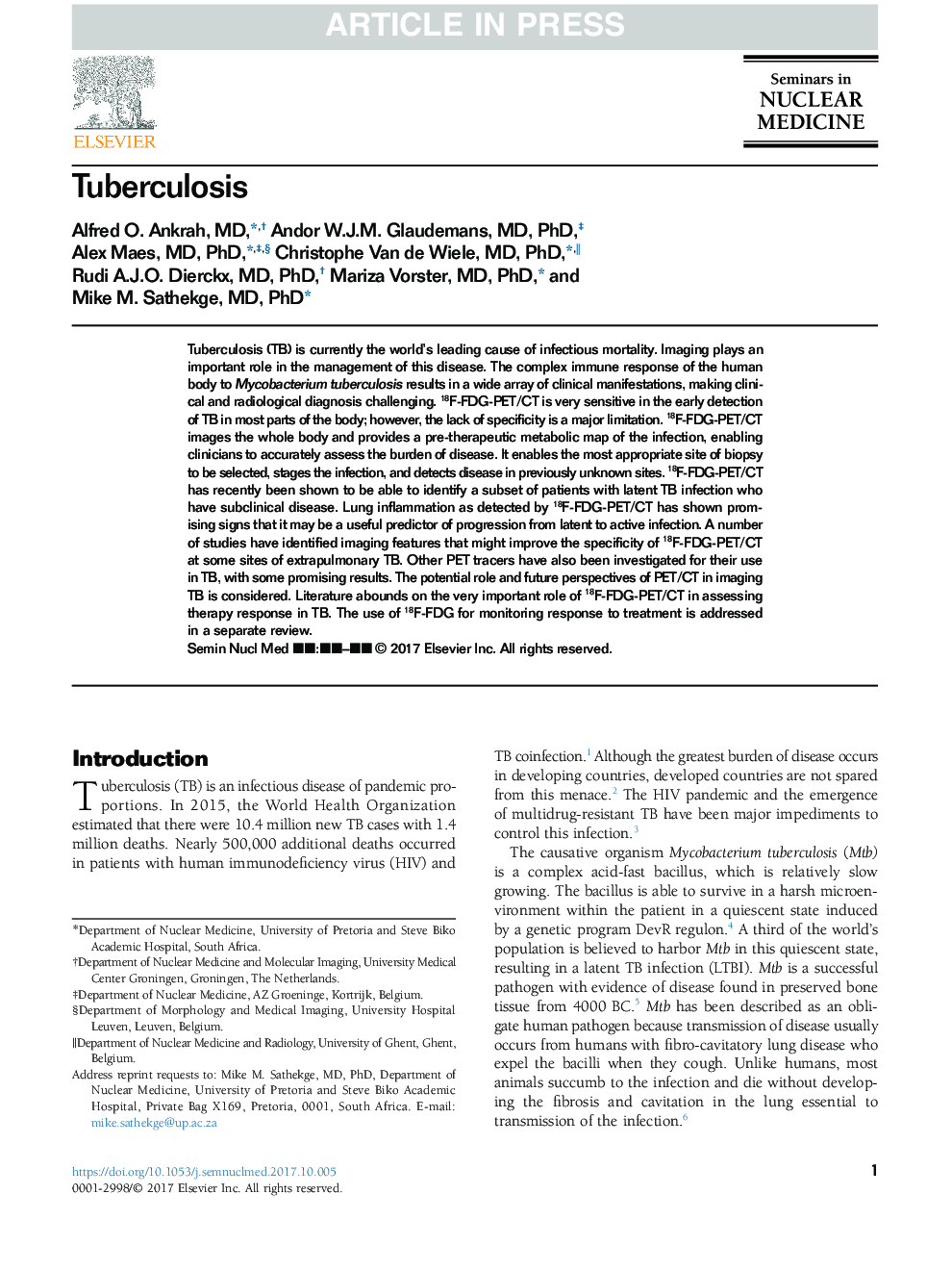| Article ID | Journal | Published Year | Pages | File Type |
|---|---|---|---|---|
| 8826185 | Seminars in Nuclear Medicine | 2018 | 23 Pages |
Abstract
Tuberculosis (TB) is currently the world's leading cause of infectious mortality. Imaging plays an important role in the management of this disease. The complex immune response of the human body to Mycobacterium tuberculosis results in a wide array of clinical manifestations, making clinical and radiological diagnosis challenging. 18F-FDG-PET/CT is very sensitive in the early detection of TB in most parts of the body; however, the lack of specificity is a major limitation. 18F-FDG-PET/CT images the whole body and provides a pre-therapeutic metabolic map of the infection, enabling clinicians to accurately assess the burden of disease. It enables the most appropriate site of biopsy to be selected, stages the infection, and detects disease in previously unknown sites. 18F-FDG-PET/CT has recently been shown to be able to identify a subset of patients with latent TB infection who have subclinical disease. Lung inflammation as detected by 18F-FDG-PET/CT has shown promising signs that it may be a useful predictor of progression from latent to active infection. A number of studies have identified imaging features that might improve the specificity of 18F-FDG-PET/CT at some sites of extrapulmonary TB. Other PET tracers have also been investigated for their use in TB, with some promising results. The potential role and future perspectives of PET/CT in imaging TB is considered. Literature abounds on the very important role of 18F-FDG-PET/CT in assessing therapy response in TB. The use of 18F-FDG for monitoring response to treatment is addressed in a separate review.
Related Topics
Health Sciences
Medicine and Dentistry
Radiology and Imaging
Authors
Alfred O. MD, Andor W.J.M. MD, PhD, Alex MD, PhD, Christophe MD, PhD, Rudi A.J.O. MD, PhD, Mariza MD, PhD, Mike M. MD, PhD,
